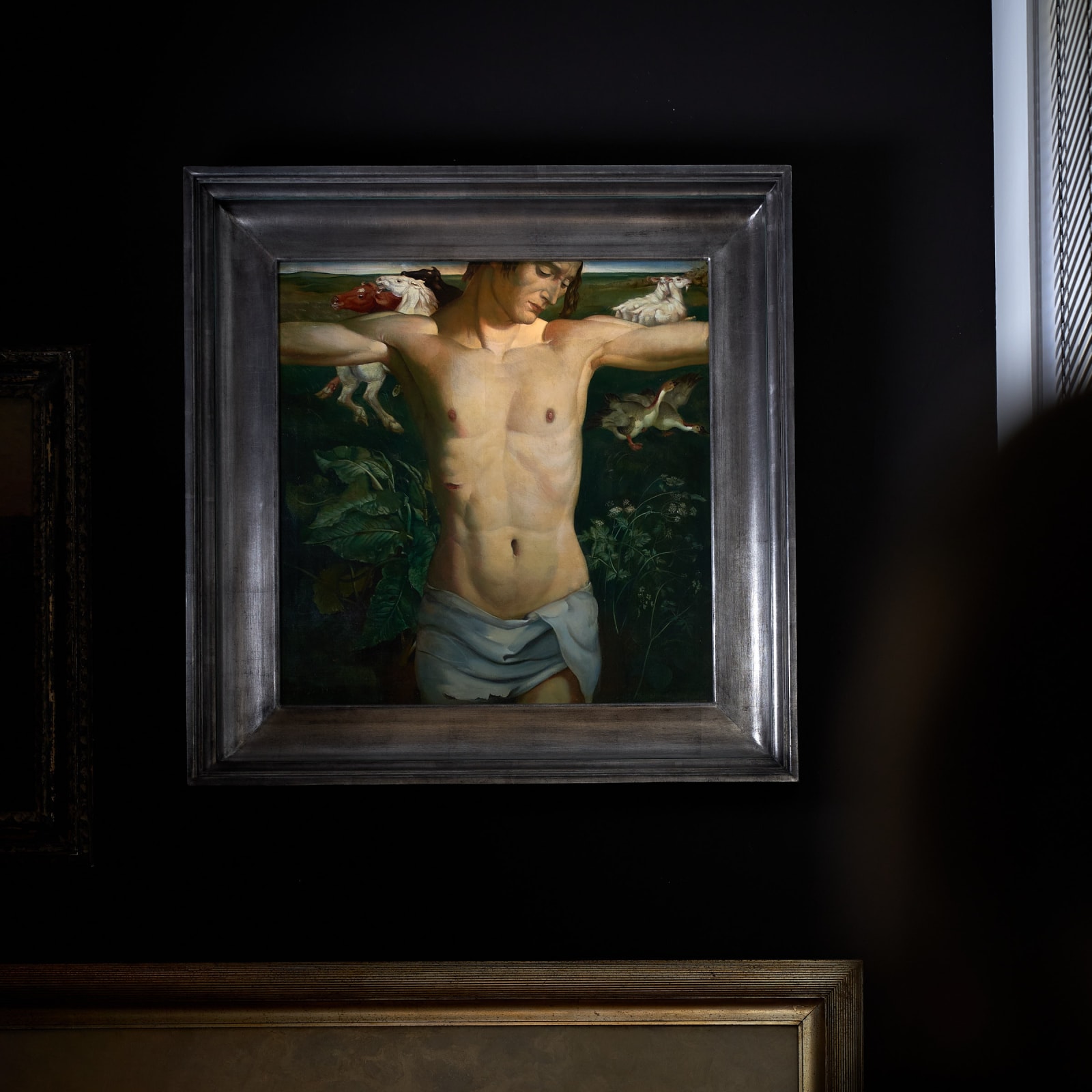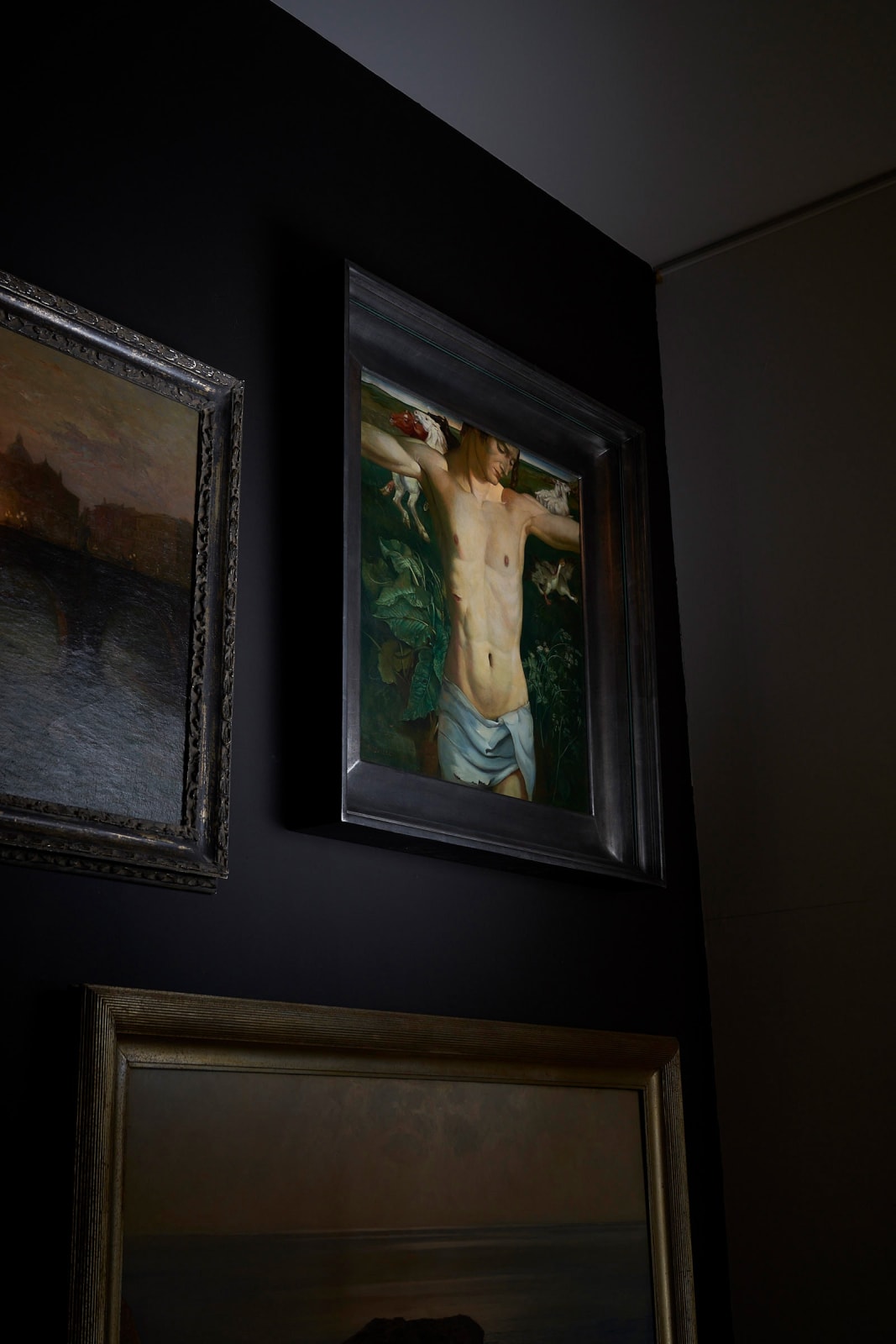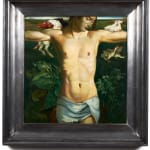Henri van de Velde
Further images
Henri Van de Velde (Dutch, 1896 - 1969) was a student of Hendrik Maarten Krabbé (1868 - 1931)
After his education he started to work in Munich, Paris and Florence. Afterwards he lived and worked in Amsterdam, Laren, Blaricum, Amsterdam, Vreeland and Abcoude (among other places). He painted, drew, watercoloured, etched and lithographed.
In 1929, he had the farm named “De Zeven Linden” in Blaricum converted into a studio flat by architect Wouter Hamdorff.
His motifs were initially animals, but later he increasingly focused on symbolism with biblical and mythological figures in particular. He had a keen interest in the technique of painting and studied the chemical composition of paint of medieval artists in order to approach their realistic touch. He strongly opposed modernism and futurism.
He felt that this alienated art from the people, this contributed to his support for German actions against “Entartete Kunst” (a term used in Nazi Germany to describe art that did not meet the demands of the National Socialist regime). He would soon also become a member of the NSB, Nationaal-Socialistische Beweging (National Socialist Movement).
In the run-up to and during World War II he produced two paintings:”The New Mensch” and “Angel of Justice”, the former inspired by Fascism and the latter by National Socialist ideology. Shortly after the Liberation, Van de Velde was arrested and interned at the Detention and Residence Camp in Amersfoort . In 1946, he was released on parole; in 1948, this was converted into a permanent release. After that he continued to paint and exhibit but was ignored by the art world and forgotten by the general public.
Van de Velde's best-known work is the painting “The New Mensch”, a large magical-realist canvas measuring 2.04 by 1.49 metres (unframed). As mentioned before, the work derives from fascist ideas. On this canvas, he showed a muscular man with a bare upper body looking into the future, holding a sword with flames in his right hand. It shows the new, fascist man with under his feet the skeleton of Enlightenment and Rationalism and the trampled books of Marx, Voltaire and Darwin, fighting against capitalism and communism and heading for a New Order.
He made this painting between 1933 and 1939. It was first exhibited in October 1939 at “Kunstzaal Van Lier" at Amsterdam's Rokin, the art gallery of Van de Velde's brother-in-law, the Jewish Carel van Lier. There, it was purchased by wealthy NSB member Louis van Leeuwen Boomkamp, treasurer of the “Jeugdstorm” (the youth wing of the NSB). In 1940, Van Leeuwen Boomkamp left on long-term business to the then Dutch East Indies and prior to his departure he donated the painting as a birthday present to NSB leader Anton Mussert who gave it a prominent place in his study in the NSB headquarters at Maliebaan number 35 in Utrecht. During World War II, the canvas was used for various NSB propaganda purposes. In the process, it was falsely claimed that the painting had been made specifically for Mussert as early as 1933 to profile him and the painter as figures who had seen the National Socialist light early on.
After the war the painting was believed to have been lost in the looting of the NSB office. In November 2003, however, it resurfaced at a Belgian art dealer. It was purchased by the Rijksmuseum Amsterdam, where it was exhibited in the Dutch History Department between 30 May and 13 June 2007. It was to become part of the permanent 20th century presentation after the reopening of the Rijksmuseum's renovated main building in 2010. The commotion that arose over this decision caused the Rijksmuseum to reverse its decision: the work was not given a place in the permanent collection





